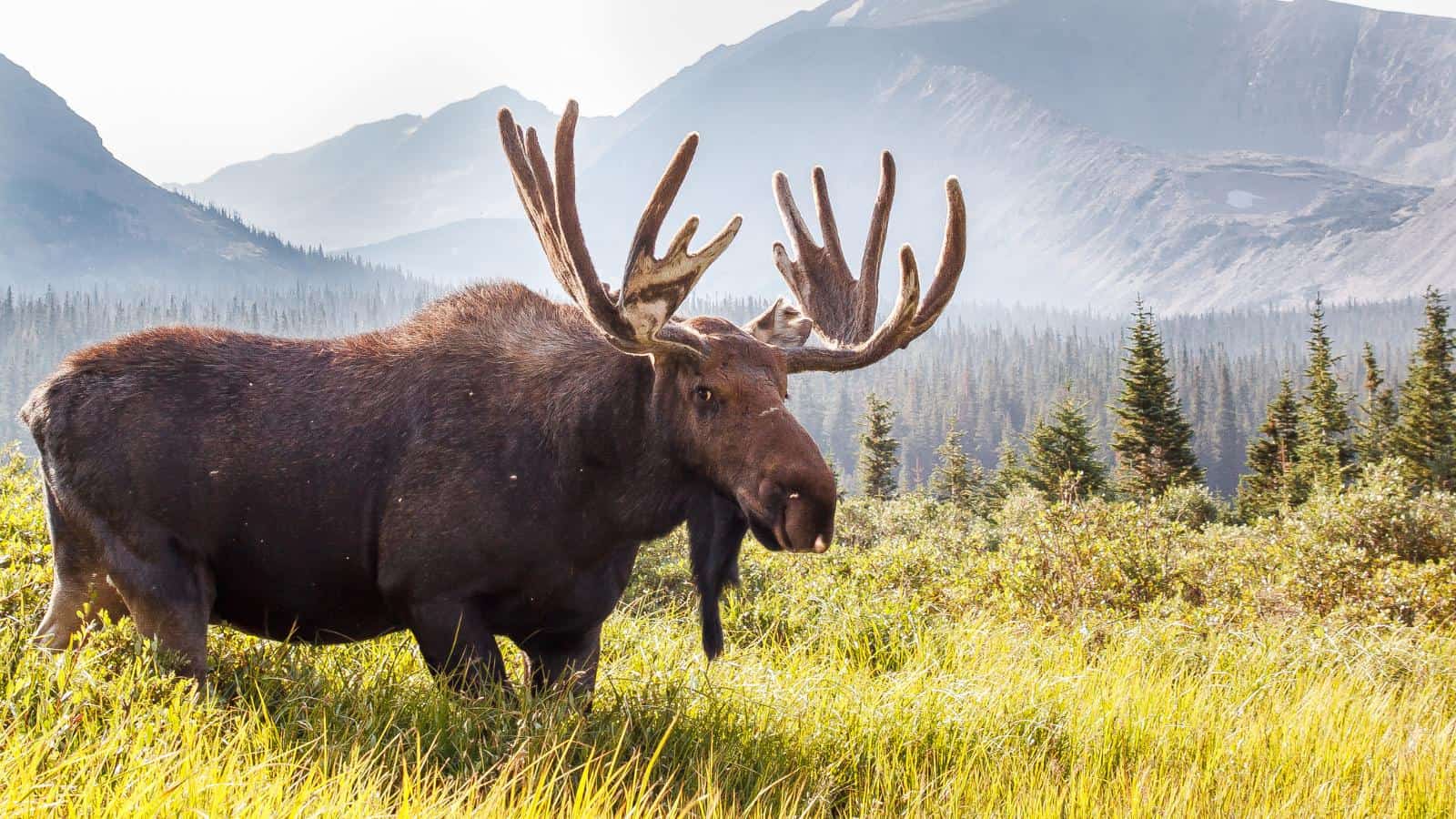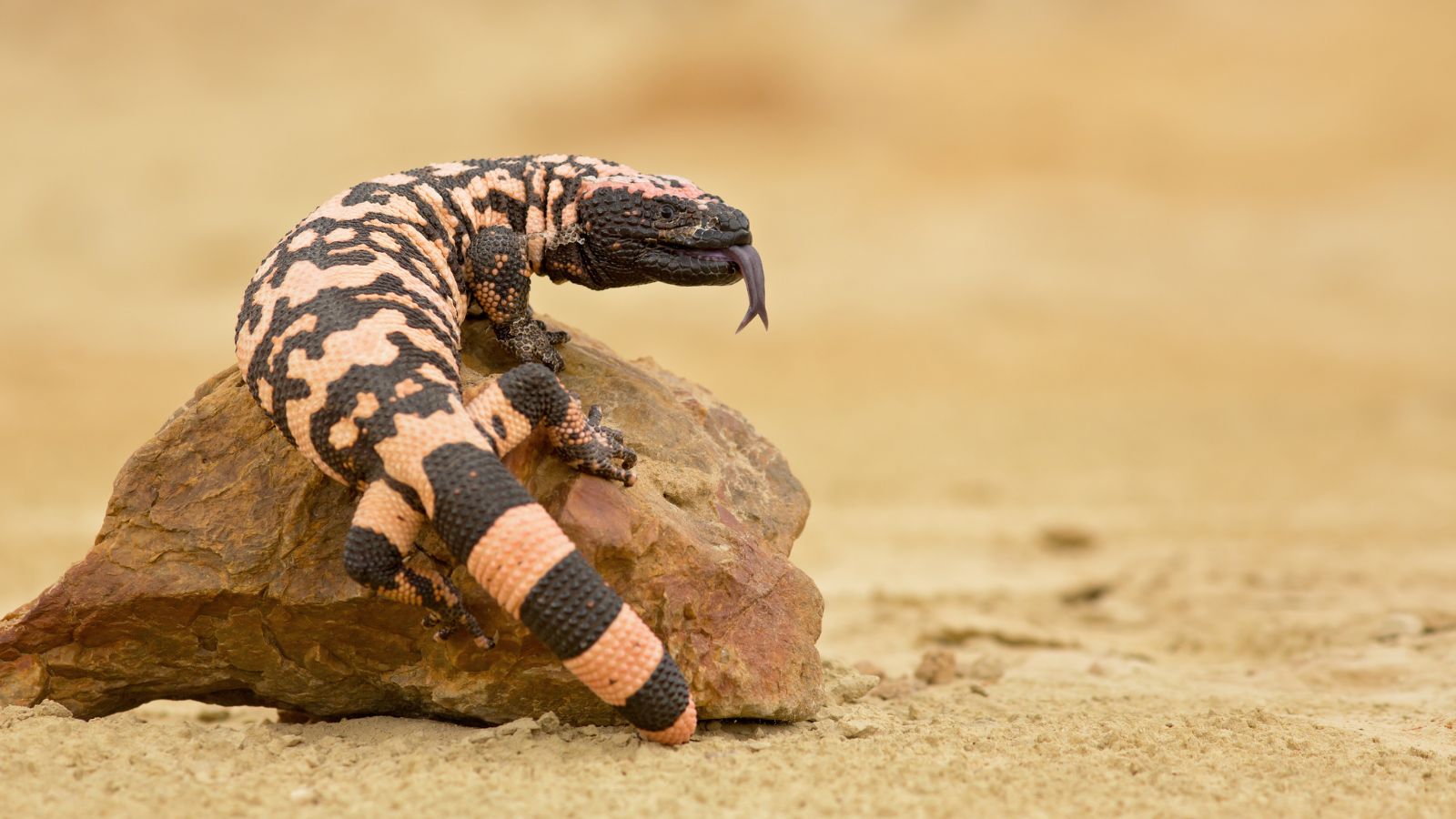In this article, we’re going to uncover 17 of the most unusual and fascinating animals that live in America. From the American alligator to the Hawaiian monk seal, get ready to learn all about these unique creatures and where you can see them!
American Bison

The American bison, also known as the American buffalo, is the largest mammal in North America, primarily found in Yellowstone National Park. They’re known for their massive size (weighing up to 2,000 pounds!) and significant role in America’s history and ecosystem.
Monarch Butterfly

Known for their incredible 3,000-mile migration from Canada to Mexico, monarch butterflies are easily recognized by their striking orange and black wing patterns. According to the WWF, “The monarch butterfly exhibits the most highly evolved migration pattern of any known species of butterfly or moth.” Unfortunately, they’re facing challenges like habitat loss and climate change.
American Alligator

Predominantly found in the southern U.S., including Florida and Louisiana, the American alligator can grow up to 16.5 feet long. They play a crucial role in their ecosystem as apex predators, so you may want to avoid them if you can!
California Condor

The California condor is North America’s largest land bird, with a wingspan of 9.5 feet. Once near extinction, it’s now recovering thanks to conservation efforts. It can be seen in the wild in locations like the Grand Canyon and Zion National Park.
Elk

Elk are large members of the deer family, with males weighing over 1,000 pounds. They’re notable for their bugling calls during mating season, along with their impressive antlers, and can be found across North America, particularly in mountainous and forested regions.
Moose

The largest and tallest member of the deer family, moose are known to feed on aquatic vegetation in northern lakes and rivers. There are four recognized subspecies of moose in the United States, as per Britannica. Each is capable of diving and staying underwater to feed.
Pronghorn

Pronghorns are often mistaken for antelopes but are a distinct North American species. They’re known for their incredible speed, capable of running up to 55 miles per hour! You can see them sprinting away in the grasslands and deserts of the central and western U.S. and Canada.
Hawaiian Monk Seal

One of the only two mammals native to the Hawaiian Islands, Hawaiian monk seals are quite the sight! They are sadly an endangered species, with a population of around just 1,100 individuals, but can be primarily found in the northwestern Hawaiian Islands.
Luna Moth

The luna moth is notable for its striking pale green wings and long tail streamers. If you’re lucky, you may spot one in the eastern United States and southeastern Canada. Interestingly, the stunning moth’s eyespots serve as a defense mechanism against predators.
Black-Footed Ferret

National Geographic states, “The black-footed ferret could also be called the black-eyed ferret because of the distinctive ‘stick-em up’ mask that adorns its face.” It’s the only ferret species native to North America and is considered endangered due to habitat loss and decline in prairie dog populations.
Gila Monster

One of the only venomous lizards native to the United States, the Gila monster is not one you want to go seeking out. Its appearance is almost as alarming as its name! These lizards can be found in the southwestern desert regions and are recognizable by their distinctive black and pink or orange markings.
Collared Peccary

The collared peccary is also known as a javelina and is found across the southwestern U.S. It’s recognizable by the collar-like marking of white fur around its neck, its pig-like snout, and its short legs. This animal adapts well to both desert and forest habitats.
Fisher

A member of the weasel family, a fisher is often mistaken for a small bear. It’s found in the forests of Canada and the northern United States and is known for its agility and ability to climb trees. If you spot one, don’t be alarmed. They’re not known to attack humans.
North American Porcupine

As shared by the National Zoo, “The North American porcupine is one of the largest rodents found in North America, coming second to the North American beaver.” It’s covered with quills used as a defense against predators and can be found in forests across the country. The porcupine feeds on a variety of vegetation, including tree bark and leaves.
Pygmy Rabbit

The pygmy rabbit is the smallest rabbit in North America and is absolutely adorable! It can be found in the Great Basin area of the western United States—but don’t try to take one home! They’re not suitable as pets and have a preference for sagebrush habitats.
Red Salamander

Distinctive for its bright red color with black spots, the red salamander is found in the eastern U.S., particularly in moist, forested areas. Oddly, it breathes through its skin due to the lack of lungs—making it very unique!
Giant Garter Snake

If you’ve got a fear of snakes, stop reading! The giant garter snake is one of the largest snakes in North America, found primarily in California’s Central Valley. It’s non-venomous but has a mild neurotoxin in its saliva, mainly affecting its prey.
Read More: 15 Ways To Tell If Someone Is Not a Good Person

While it’s important to avoid quick judgments, certain behaviors can be strong indicators of a person’s character. Here are 15 ways to discern if someone might be a bad influence or possess harmful traits.
15 Ways To Tell If Someone Is Not a Good Person
Why People Aren’t Religious Anymore: 15 Simple Reasons

As society evolves, so does our approach to spirituality. This article looks at the subtle yet profound shift from traditional religious adherence to a more personal, evidence-based belief system.
Why People Aren’t Religious Anymore: 15 Simple Reasons
17 Things That Used to Be Highly Respected But Aren’t Anymore

Many things in the world used to be well-respected before turning into complete jokes for various reasons. An internet survey recently asked people, “What is something that was once highly respected but is now a complete joke?” Here are the top 20 answers:
17 Things That Used to Be Highly Respected But Aren’t Anymore
17 Fairy Tales That Are Now Considered Racist

While fairy tales weave magical narratives that span generations, many emerge from historical and cultural contexts tinged with biases. Hiding in many of these tales, racial undertones can be found. Let’s look at 17 fairy tales that have deeper implications.
17 Fairy Tales That Are Now Considered Racist
19 Untrue American Stereotypes That Are Widely Believed Internationally

Stereotypes and misconceptions can be misleading and frustrating, especially when they pertain to nationalities. Let’s explore and debunk some common myths about America, as shared by internet users.
19 Untrue American Stereotypes That Are Widely Believed Internationally
